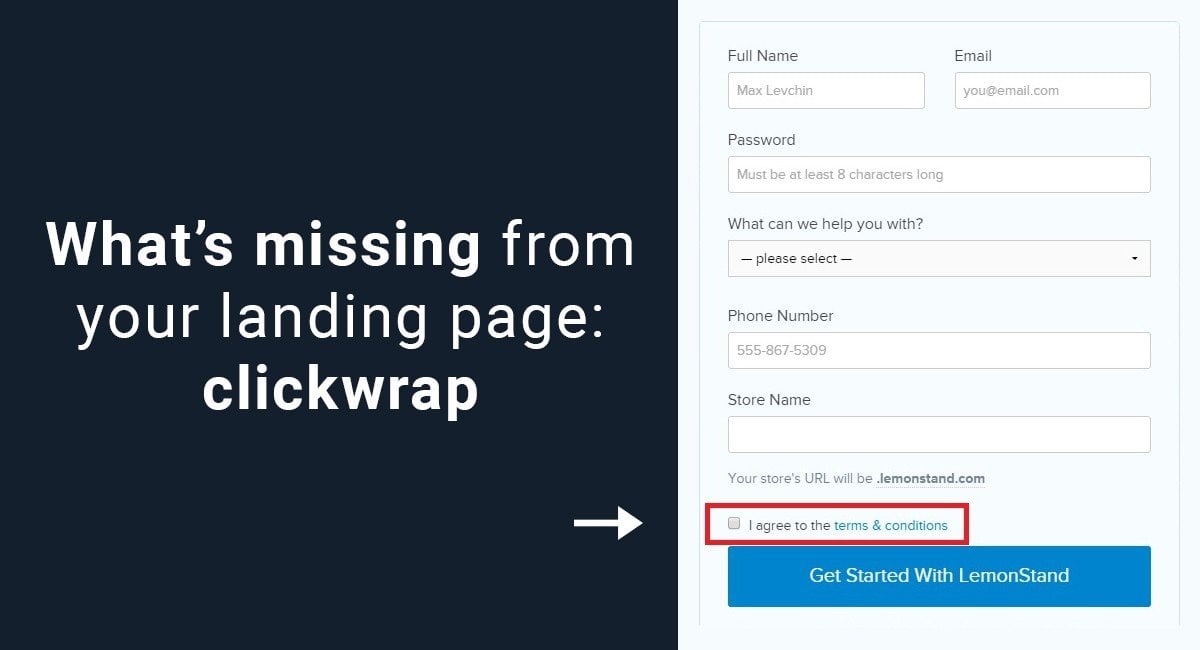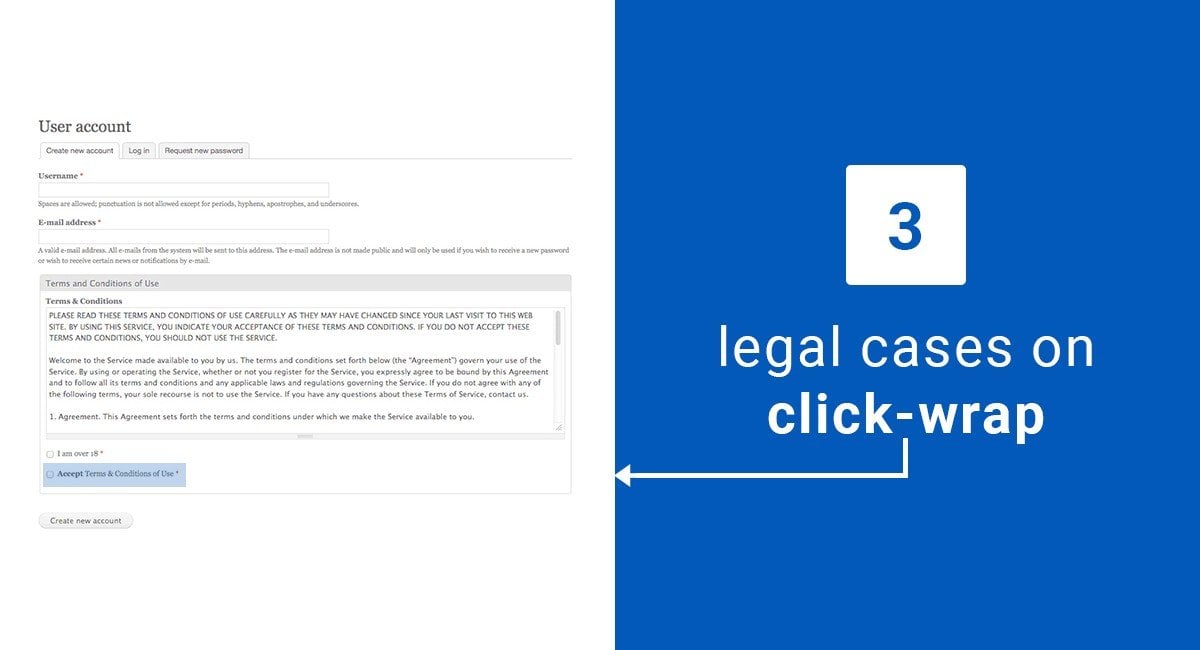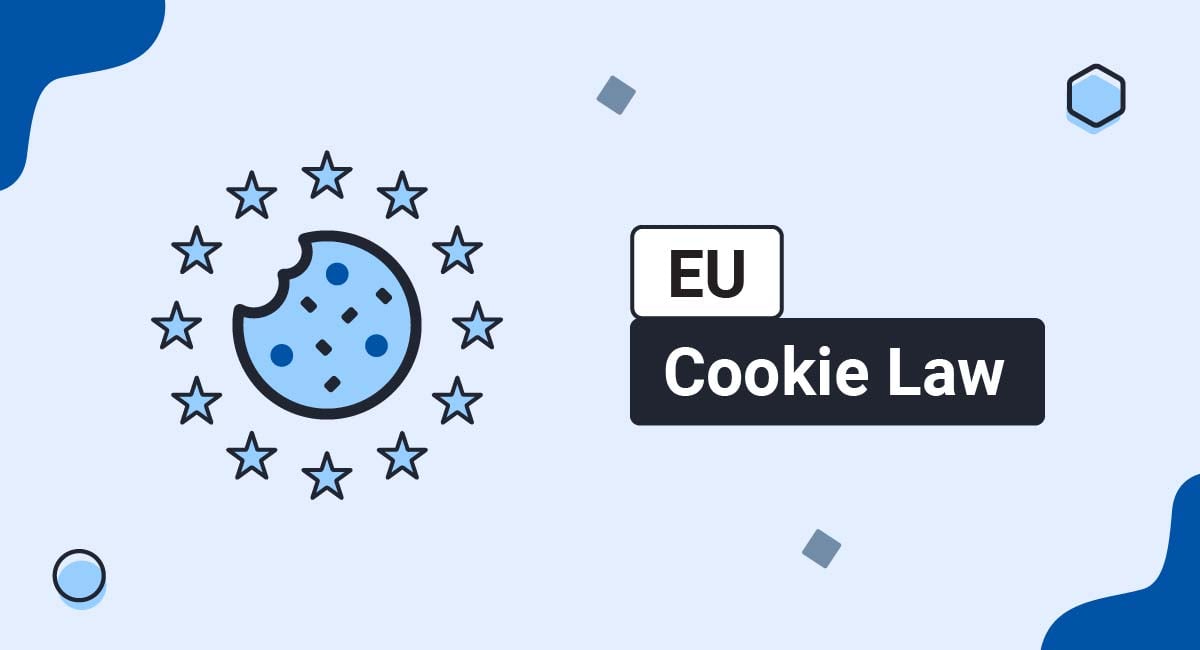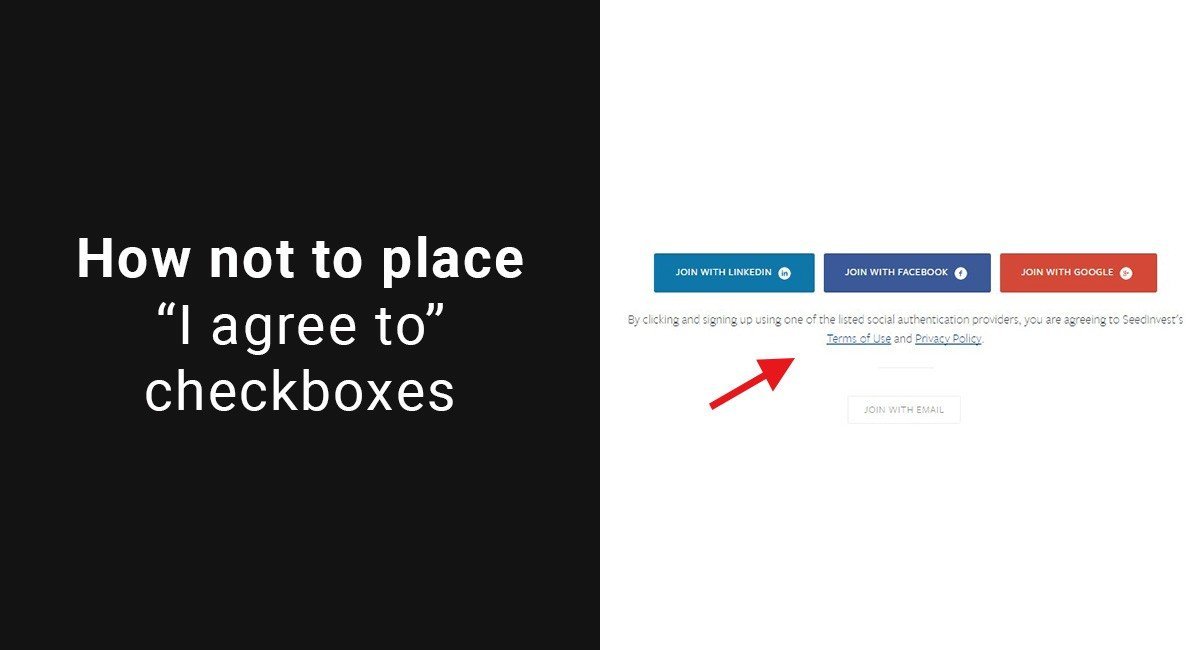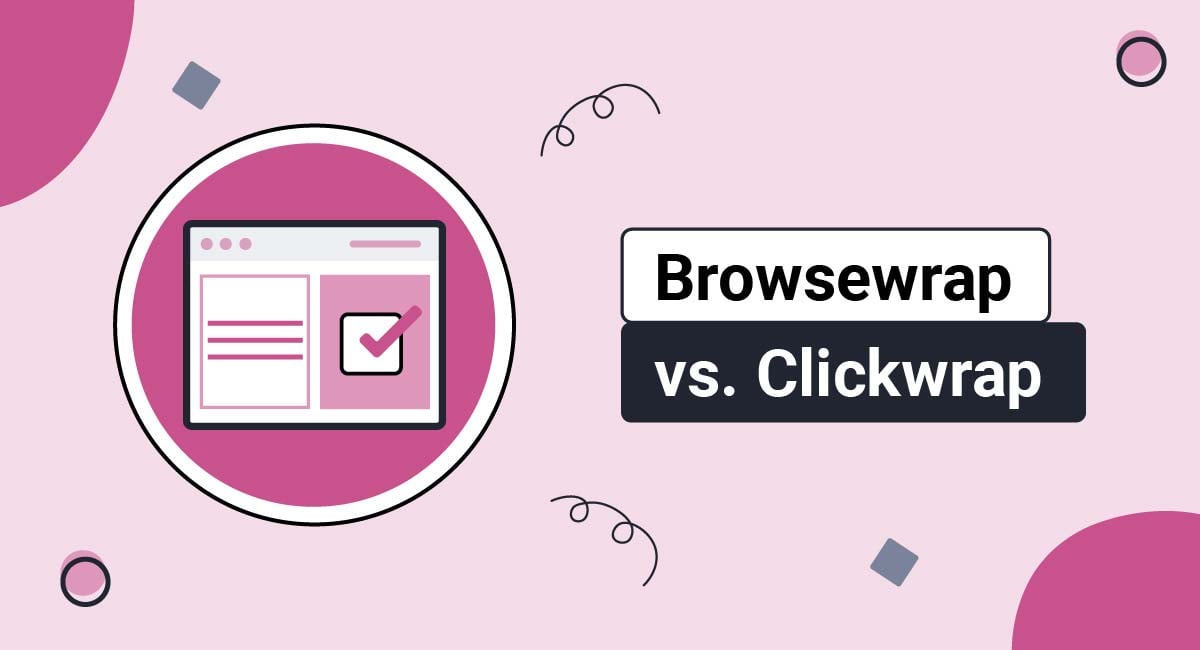Blog: Consent
Page 7
Navigate
-
EULA Agreements
-
Cookies Policy Agreements
-
Disclaimer Agreements
-
Privacy Policy Agreements
-
US Privacy Laws
-
Return Policy Agreements
-
Legal Requirements
-
EU Privacy Laws
-
Terms & Conditions Agreements
-
How to
-
Asia Privacy Laws
-
CA Privacy Laws
-
Consent
-
Templates
-
Consumer Privacy
-
AU Privacy Laws
-
LatAm Privacy Laws
-
Clauses
What's Missing From Your Landing Page: Clickwrap
The typical marketing approach to landing pages is for all navigation bars to be hidden so that the call-to-action is clear and uncluttered with excess unnecessary web components (navigation, other links etc.) While this may make complete sense from a marketing perspective, this is a huge mistake from a legal perspective. Your...
3 Key Legal Cases on Clickwrap
Clickwrap is becoming more commonly known as a legally secure and easy way of creating binding agreements with your users online, such as Terms & Conditions, Terms of Service or Terms of Use. There are a number of legal cases that have established the validity of clickwrap methods, however, and they...
EU Cookie Law
The EU Cookie Law sets rules on how websites and apps set cookies and other trackers. It's part of an important EU law called the ePrivacy Directive. The law requires website and app operators to get consent for certain types of cookies. The law also states that website and app operators...
How Not to Place "I Agree to" Checkboxes
The following are crucial factors when it comes to getting valid and enforceable agreement to your website or mobile app Terms and legal agreements: How enforceable your Terms and Conditions or Privacy Policy agreements are Where you place the "I agree to" checkbox to obtain consent and agreement, and What language is placed...
"I Agree" Checkboxes
The best way to get users to consent to your Privacy Policy or Terms agreement is with an "I Agree" checkbox. This works by requesting that users check a box next to an "I Agree" statement to prove they do in fact agree to be bound by your legal agreements....
Browsewrap vs. Clickwrap
Browsewrap and clickwrap are different methods used for binding users to a set of terms. Clickwrap obtains active, overt consent for something, while browsewrap obtains implied consent that isn't always legally binding. It's important for business owners to understand the difference between browsewrap and clickwrap and what makes a legal agreement...
